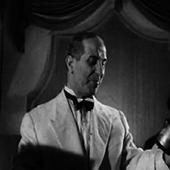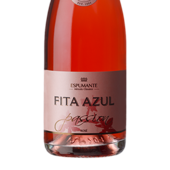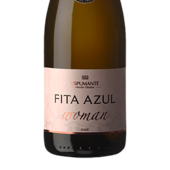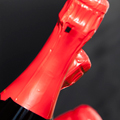Produced using the classic method (imported from the Champagne region of France), each bottle of Fita Azul has been carefully crafted to pleasantly surprise... We would like to invite you to join us on tour of the art of producing a sparkling wine...
Selecting the grapes
Selecting the right base wine is a key part of producing a sparkling wine and different sparkling wine profiles require different base wines. Borges' extensive experience in all the main wine producing regions in Portugal means that it has access to base wines from a wide variety of sources. These can then be blended to produce a batch that is perfectly suited to creating the target profile of each sparkling wine.
Grape harvesting
The grapes used in producing Fita Azul sparkling wines are normally harvested in August and September. As soon as the grapes have reached peak maturity, they are picked.
A good base wine for a sparkling wine should have a relatively low alcohol content and a relatively high acidity.
Pressing and first fermentation
The grapes are completely de-stemmed and gently pressed, with only the must that drains off being used. This is followed by cold static decanting for 24 hours, after which the must is separated from the lees. Fermentation is then started at a controlled temperature of 16 ºC. Once alcoholic fermentation has completed, the wine will rest on the fine lees for 2 months.
Assemblage
The oenologist will test different wines from different years, to find the perfect assemblage (blend). This job requires inspiration, a sense of discovery and all the emotions...
Stabilisation and Filtration
Before bottling, the wine undergoes proteinic and tartaric stabilisation before being subject to a number of filtration processes designed to remove microorganisms and improve clarity.
Bottling and second fermentation in the bottle
The time has arrived to add the liqueur de tirage to the large vats containing the base wine. The wine is decanted into bottles, which are sealed with a simple cap. They are now ready to go to the cellars for ageing in the dark, without draughts and at a constant temperature (12 º to 15 ºC).
In following the classic method of making sparkling wine, the second fermentation takes place in the bottle (in a closed environment), while the wine is ageing in these cellars.
This second in-bottle fermentation, just like all other fermentations, produces carbon dioxide, which, as it cannot escape, dissolves completely into the base wine. The wine becomes “sparkling”.
The longer the fermentation time, and the greater the absorption of the gas into the base wine, the better the quality, intensity and duration of the bubbles will be.
Ageing
The ageing (the time between bottling and disgorging) of Fita Azul sparkling wines takes place in our cellars and at controlled temperatures. This process is critical to the final quality of the wine.
During this time, the wine matures over the lees, which play an important role in determining the quality of the froth and the taste of the final product.
It is during this time that the autolysis of the yeasts contributes to the complexity and enrichment of the aroma. Initially, most base wines have aromas with fruity and flowery notes.
As ageing progresses, the aroma of the sparkling wine changes and the notes become more buttery, biscuity and redolent of dried fruit, etc. The Reserve wine is aged for at least a year, the Super Reserve for at least two years while the Old Reserve slumbers in the shady cellars for three years and more.
Remuage
When the Fita Azul sparkling wine is ready to make its way to the market, the ageing process is brought to a close and remuage begins. Whether manual or mechanical, the remuage process is designed to ensure that the sediment (yeast deposits) formed during re-fermentation moves down to the neck of the bottle.
Disgorging
At the end of the remuage process, the bottle finds itself in an upside-down position. The sediment that has accumulated in the neck of the bottle has to be removed. This process is called disgorging.
Disgorging is done "à la glacée", so the bottles are first taken to a freezer where their necks are dipped into a liquid that freezes the part of the wine that contains the sediment. These icy plugs are removed and the bottles, containing the rest of the wine, moves on to the final phase: the addition of the "liqueur d’expédition".
Dosage
This involves adding the "liqueur d’expédition" to the sparkling wine, with the aim of improving the taste experience and increasing its shelf life.
The amount of sugar added in the "liqueur d’expédition" is of critical importance. The relative concentration of this sugar, added after disgorging, defines the various styles that can be marketed, as identified on the labels of our Fita Azul sparkling wines.
Increasing the amount of sugar produces the following types of sparkling wine: brut, dry, semi-dry and sweet.
Corking
In the final closing of the bottle of sparkling wine, a cork (made of agglomerate with two disks of natural cork) is partially inserted into the neck. This partial insertion means that the part of the cork that has not been pushed into the bottle is wider than the part that has gone into the neck. This results in the “mushroom” shape.
Wiring
The high pressure found inside a bottle of sparkling wine would push out the cork, making it necessary to employ a mechanism to keep the cork in. This is known as the muselet or cage.
Post-Disgorging Ageing
In order to ensure that our sparkling wines offer a consistent taste experience, the wines are aged for a further 45 to 120 days after the "liqueur d’expédition" has been added. They are then ready to go to market.
Labelling and Packaging
In a final stage, the Fita Azul is finally labelled and packaged on the modern labelling lines at Sociedade dos Vinhos Borges. It is now ready to “Celebrate Emotions” along with its consumers.















